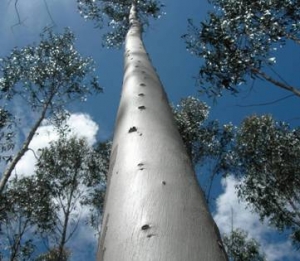Eucalyptus BAC libraries as tools to identify and characterize genomic sequences involved in wood formation

In collaboration with:
-
Dr. Jacqueline Grima-Pettenati
UMR 5546 "Surfaces Cellulaires et Signalisation chez les végétaux"
Pôle de Biotechnologie Végétale
24 chemin de Borde Rouge
31326 Castanet Tolosan
-
Dr. Jorge Paiva
IBET
Av. Republica, Qta do Marques (EAN)
Apartado 12
2781-901 Oeiras
Portugal
Abstract
Eucalypts are among the most planted forest trees in the world. They are being used for many purposes such as paper pulp, wood, charcoal, energy as well as for recovery of marginal soils. The main species planted for their industrial value are Eucalyptus grandis and Eucalyptus globulus, in tropical and temperate regions, respectively. Because of their long generation times as compared to crop species, they are still at the early stages of domestication. Genomic technologies could significantly speed up the process of genetic improvement of Eucalyptus. As a major effort to this end, the sequencing of the Eucalyptus grandis genome is currently underway by the US Department of Energy.
Genomic libraries are also important genomic tools suitable for physical mapping, map-based cloning and genome sequencing. The goal of EucaBac is to explore the Eucalyptus BAC libraries to identify and characterise genomic sequences implicated in wood formation and potentially responsible for the physical and chemical properties of wood.
This collaborative project benefits of the availability of Eucalyptus BAC libraries, the CNRGV (Toulouse, France) expertise on development of genomic tools (e.g. bacterial high-density filters), and the joint efforts of CNRS/UPS (Toulouse, France) and the IBET (Oeiras. Portugal) and IICT (Lisboa, Portugal) on BAC clone identification, sequencing and functional analysis of genes of interest.
CNRGV's responsible : Elisa PRAT/ Sonia VAUTRIN
CNRGV involvement:
- Macroarray production/ screening
- 3D DNA pools production/screening
Publication related to the project:
